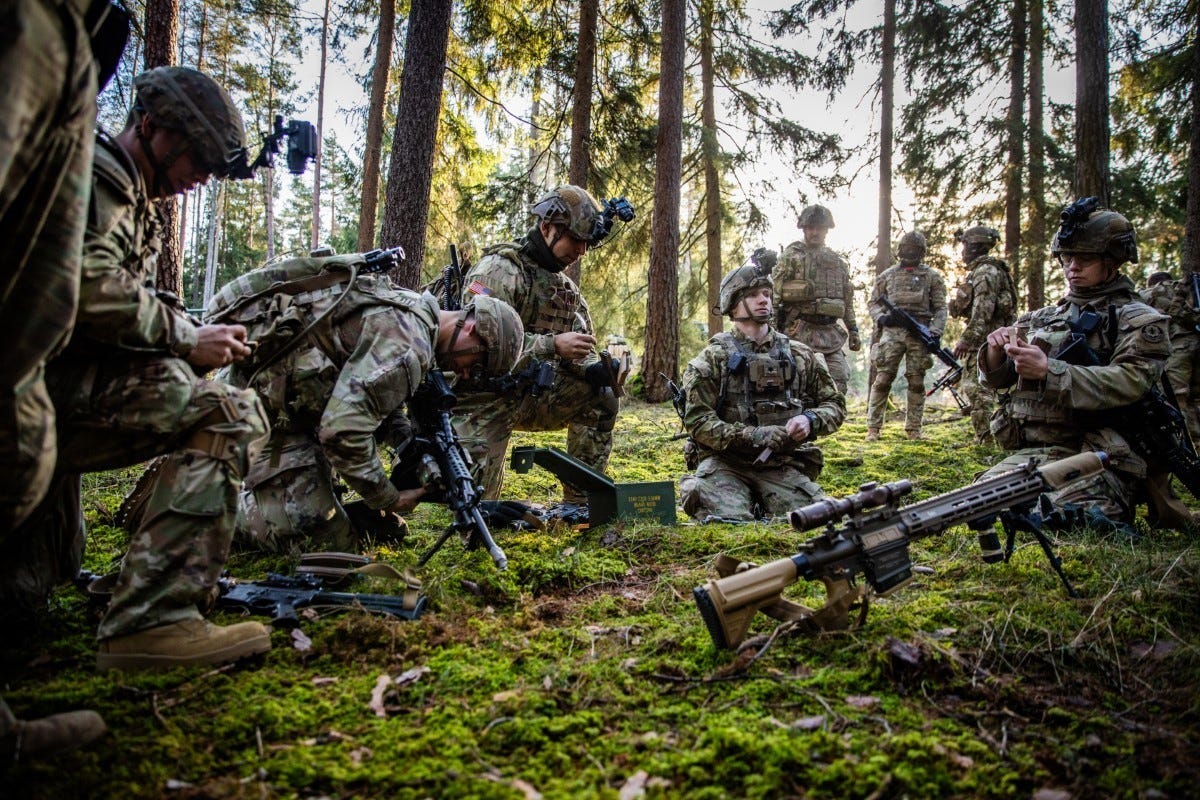U.S. Soldiers, assigned to the 2nd Squadron, 2nd Cavalry Regiment prepare weapons for training during a simulated training exercise at Vilseck, Germany Feb. 5, 2024. The exercise engages in platoon-level training within field and urban... (U.S. Army photo by Spc. William Kuang)
Have you ever been in a leadership or key staff position where you faced a problem or challenge that required a group effort to achieve the best outcome? According to Dr. Bill Howatt in an article published in Forbes Magazine, “Collaborative leadership goes beyond a leader’s team. It includes discovering the best way to join forces with other leaders to ensure no silos between groups impede opportunities to achieve the organization’s full potential.” (Howatt, 2023)
In my current role as a Topsarge Business Solutions research assistant with a role to collaborate with U.S. Army Training and Doctrine Command Centers of Excellence, I have experienced first-hand about the need to join forces with others without being in charge or the leader. At one site that I support, the top leader’s vision focused on collaboration across the organization to effect positive change and identify innovative solutions to challenges facing her cohort of senior enlisted leaders. To put that vision into motion one step included the formation of a new partnership that brought together our leader development and research firm, military research specialists and psychologists, and the institution’s forward-thinking office in order to investigate and develop new initiatives.
This style is early in its lifecycle, but after tackling a few complex problem sets the arrangement has allowed the ad hoc team to find collaboration methods and operate harmoniously as a peer group. So far, the team has succeeded in finding potential solutions that were created by bringing together a variety of talents and skills that did not exist on location before. This method of co-creation aligned specialists and subject matter experts who provided feedback to the overall group for progress and allowing each collaboration partner to retain their own identities.
Since December of 2023, the team has successfully collaborated on three projects, yielding positive results. The impact of these efforts has the potential to develop into enduring relationships which can positively affect the studied cohort. This was made possible through discussions and fostering of relationships between forward thinking leaders and various staff elements, moving toward a common goal: streamlining of systems and processes, thinking outside the box, and most importantly creating an environment where multiple thoughts, experiences, and views are respected and encouraged to develop a better product.
Matt
Command Sergeant Major Matthew T. Lord, U.S. Army, Retired






